Croatia is a country with a rich history and culture; the old towns, monuments, people, and traditions are the ambassadors of its unique history. It also has 10 UNESCO World Heritage sites and 15 sites and monuments on the ‘Tentative’ List. Many of these sites can be visited during a sailing holiday in Croatia. The beauty of Croatia only enhances your sailing experience and it’s no surprise why the Adriatic Coast today is a hotspot for sailing holidays and charter guests in the summer months.
DAY 1. SPLIT - MILNA (BRAČ)
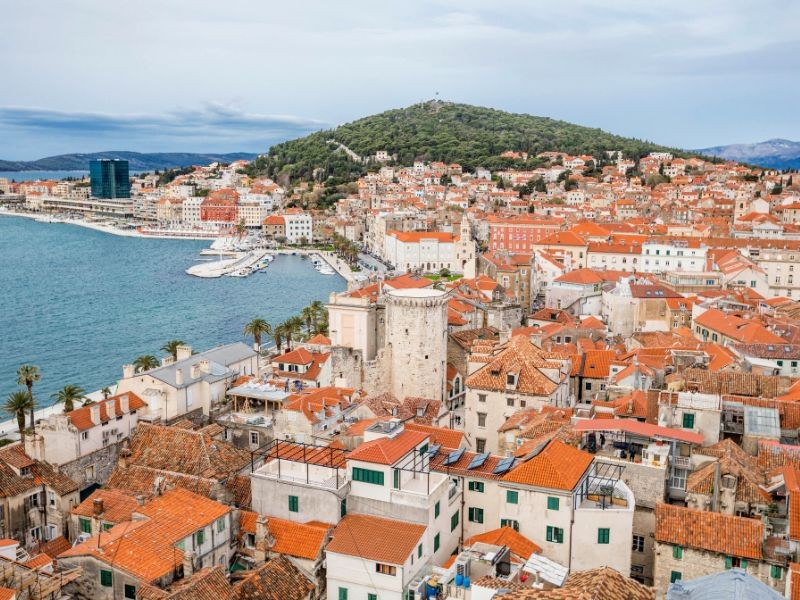
Before you embark on your boat, you should definitely take a walk and explore the Old city of town Split! Located on the eastern shore of the Adriatic Sea, Split extends on a peninsula and is marked by Marjan hill, the remains of Diocletian’s Palace, the bell tower of Saint Domnius Cathedral, and a vibrant waterfront promenade where Mediterranean vibes thrive. Today the main hub to the central Dalmatian islands and Croatian coastal towns, Split quickly rose to fame as one of Croatia’s most popular tourist destinations.
If you are interested in discovering history and architecture, we suggest you visit:
- The Cathedral of Saint Dominus (patron saint of Split) & Peristyle (central square of the Palace).
- Vestibule and Temple of Jupiter City squares (Prokurative, Pjaca, Voćni trg/Fruit square).
- Meštrović Gallery
- Drink a coffee on Vidilica, with a view of the whole town.
- Take a walk on Riva, the main promenade.
- Blend in with the locals and feel the rhythm of this amazing town!
After the embarkation, sailing toward Milna on the island of Brač.
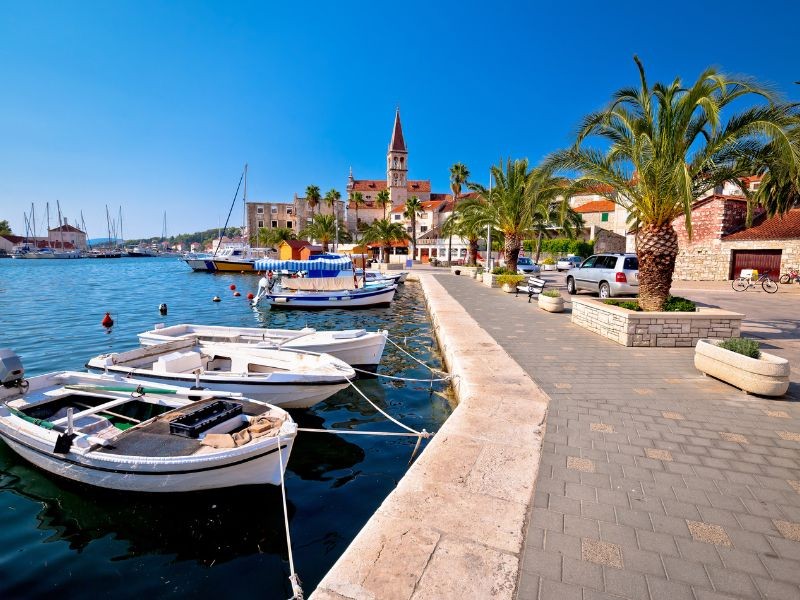
Milna is a picturesque town on the west coast of Brač island, surrounded by beautiful beaches. It is a typical small island village with Mediterranian charm and atmosphere. Milna itself is in one of the most sheltered coves on the island, making it a favorite for yachters.
DAY 2. MILNA (BRAČ) - PAKLENI ISLANDS - VIS
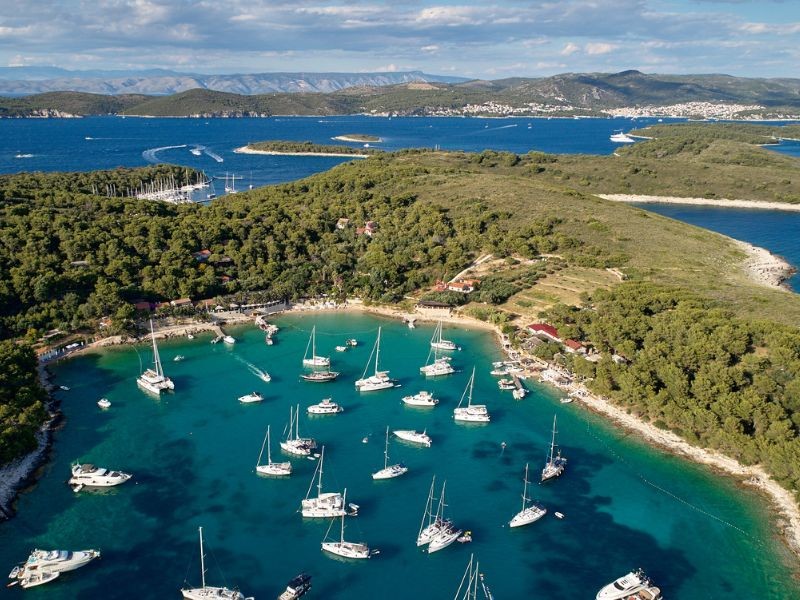
Leaving Milna on the island of Brač for Pakleni islands near the island of Hvar.
Pakleni islands are a chain of islands approximately 10 kilometers long. They are famous for the crystal blue sea, small beaches, and numerous hidden bays. Enjoy your swimming time on the water toys provided on the yachts. Here you will find your peace of private paradise right in front of a very popular hot-spot destination; island Hvar.
Enjoy lunch and swimming time at Pakleni islands. After that sailing towards the island of Vis.
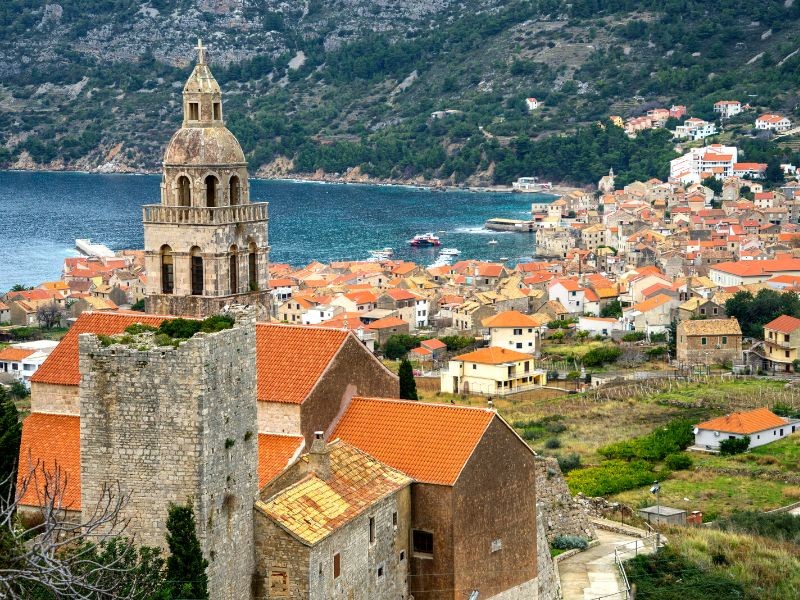
Vis is the farthest inhabited island off the Croatian mainland and neighbors Korčula to the east and is surrounded by an archipelago of smaller islands, like Biševo (famous for the Blue Cave), and Palagruža. It’s also only 60 miles away from the Italian coast! An island of fishers. A former Yugoslav military base. A famous Hollywood film set. And home to one of the best beaches in Europe. Even these accolades hardly scratch the surface of what Vis has to uncover as one of Croatia’s most exciting islands.
Activities and guided tours we recommend in Vis:
- Blue Cave Tour - natural phenomena of the world.
- Military Tour - a guide will take you all around the island, through the inland and off-road trails to the most hidden Yugoslavian military undermines and the story of the "Forbidden Island".
- Wineries - winemakers have thrived on Vis since the Greeks roamed the island, with Vugava and Plavac being the trademark grapes of Vis. We suggest the unique Lipanović winery, with its cellar housed in a Yugoslav military tunnel.
- Bike Tour - enjoy your bike ride with rapidly changing amazing landscapes, breathe fresh sea air and discover remarkable history points.
- Rent a scooter/Quad - if you are not interested in guided tours, rent a scooter or quad and discover the island on your own!
DAY 3. VIS - LASTOVO
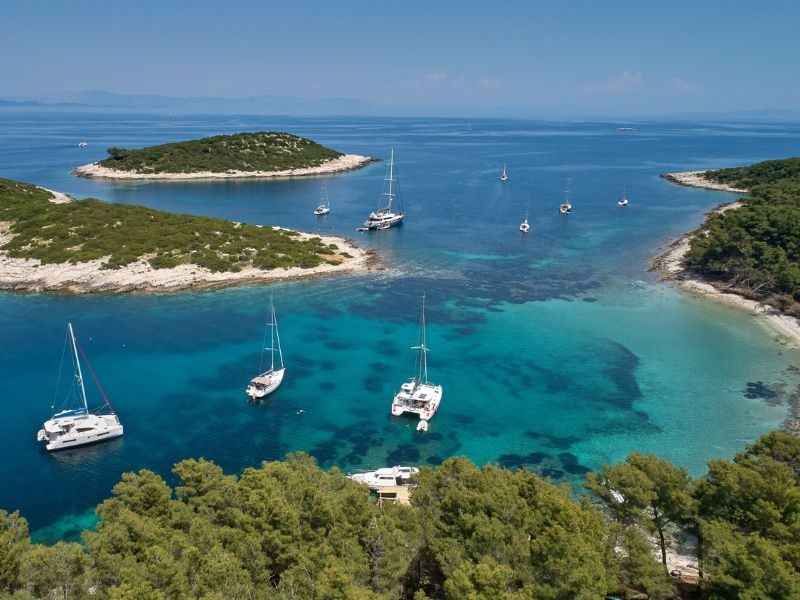
Located 13 kilometers south of Korčula, Lastovo is made up of 46 islands and islets, ss one of the richest and best-preserved botanical areas in the Mediterranean. With a tiny total population of under 800, most of its inhabitants are settled in the island’s largest town - Lastovo. Decorated with dense pines, unusual nature, trademark chimneys, and military history, Lastovo is one of the most captivating islands on the Adriatic Coast.
When in Lastovo we recommend:
- Explore Lastovo’s old town - located under high peaks which form the base of the amphitheatrically shaped settlement. The town consists of medieval family houses full of characters dating from the 15th and 16th centuries. Each house is featured with Lastovo’s famous trademark chimneys known as Fumari.
- Hiking - did you know that Lastovo has over 200 km of marked trails for hikers? The best is the educational trail “Via the present to the past,” which highlights the natural beauties and cultural heritage of Lastovo. For those looking to reach new heights, Lastovo’s highest point is Hum (418 meters). Once you reach the top, you’ll be rewarded with breathtaking views of the islands.
- Military history -explore the remains of the Yugoslav military bases, like abandoned underground tunnels, military installations, and hideouts!
- Churches - did you know that Lastovo has 38 preserved and ruined churches in total? Or that 21 of them are registered as protected cultural property? Mostly built from the 12th to the 15th centuries, a great way to explore Lastovo’s churches is by walking a trail connecting several churches on the island.
DAY 4. LASTOVO - KORČULA
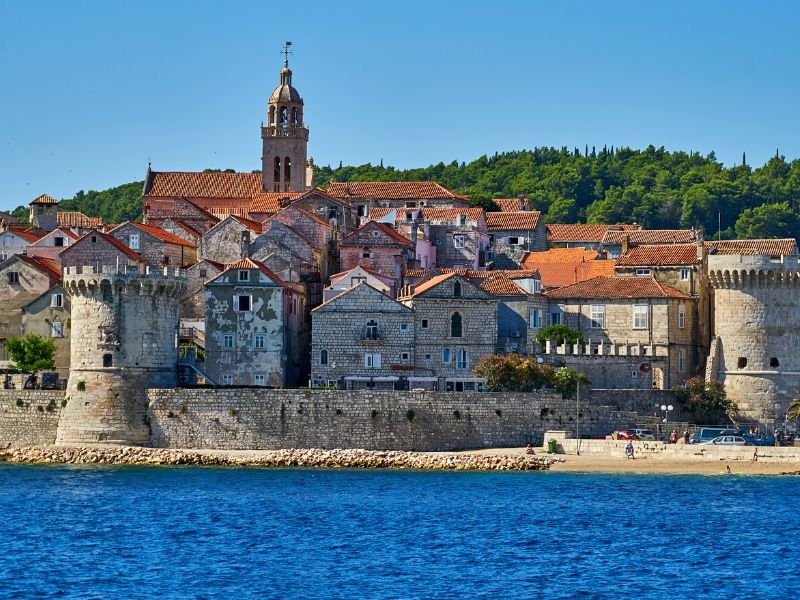
Korčula is an island with over 20,000 years of history, heavenly white wine, vibrant sword dances, and unequaled beaches. It is an island where tourists can experience the Mediterranean as it once was, without the footsteps of tourists that trample Hvar and Dubrovnik. It is lit up by local life, quaint villages, and fertile fields. It is a fantasy destination for foodies and history buffs. But more than all, it is a sanctuary for sailors.
When in Korčula, we recommend:
- Wine tasting Tour - visit one or more of the various wineries and sample delicious local wines, especially white wines such as Grk, Rukatac, and Pošip.
- Korčula Old Town Tour - learn about history and architecture with a local guide.
- Visit various museums, churches, Marco Polo’s house and St. Mark’s Cathedral.
- Mountain Bike Tour - discover inland and small villages with a professional tour guide.
- Rent a buggy or car - discover new places on your own.
- Listen to Live Music - numerous bars & restaurants offer live performances nightly, from modern covers to traditional Croatian folk music and the beautiful harmony of a local Klapa (a cappella) group.
DAY 5. KORČULA - JELSA (HVAR)
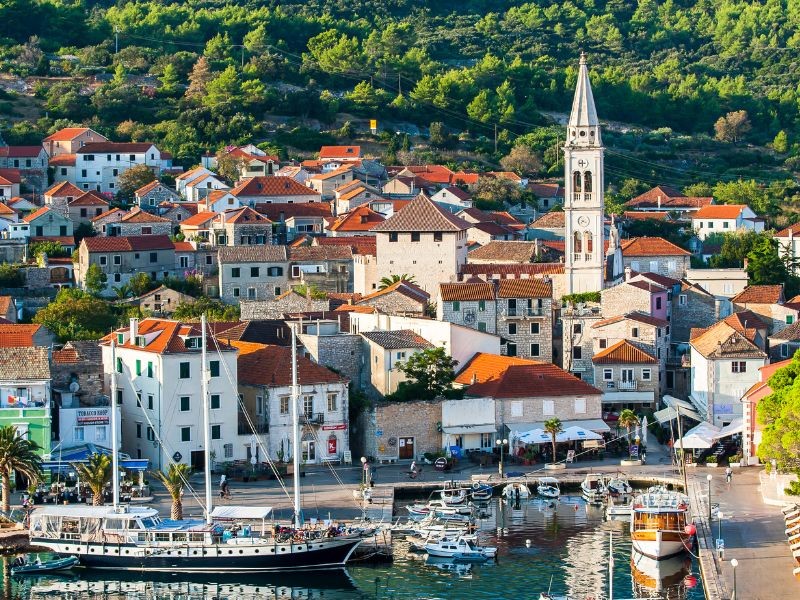
Jelsa is the second largest town on Hvar situated in a bay on the northern coast of the central part of the island of Hvar. It grew from a little fishing and agricultural place to a shipbuilding and maritime center. Jelsa has a coastline with numerous bays where you can find your peace and pleasure.
When in Jelsa we recommend visiting:
- Historical sites - the villae rusticae, remnants of the Roman era, old Jelsa City (Civitas Vetus Ielsae), or any or all of the stunning and centuries-old churches that dot the Jelsa landscape.
- Grapčeva cave - the cave is considered the birthplace of Hvar culture and is one of the oldest prehistorical sites in all of the Mediterranean.
- Perivoj - public garden which used to be a swamp that dried up in the 19th century.
- Greek fortress of Tor - built in the 4th century BC on the remnants of an earlier Illyrian fort.
DAY 6. JELSA (HVAR) - BOL (BRAČ) - HVAR
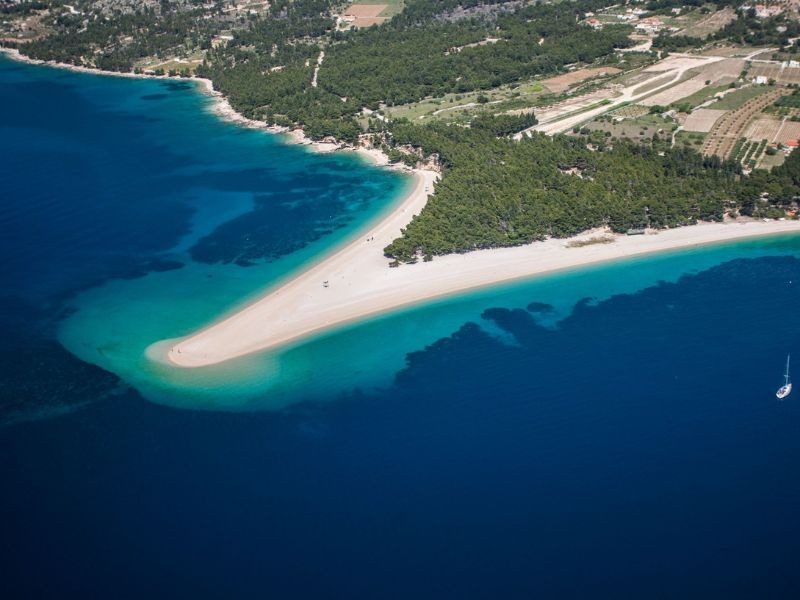
Picturesque Bol located on the island of Brač is one of the most beautiful destinations of the Adriatic. It is very popular among not only Croatian but also jet-setters from all over the world. It is located just under Mt Vidova Gora, the highest peak of Dalmatian islands, and it is famous for the most attractive Adriatic beach - Zlatni rat or The Golden Point.
Enjoy lunch and swimming time in a crystal blue sea. After that heading to the town of Hvar.
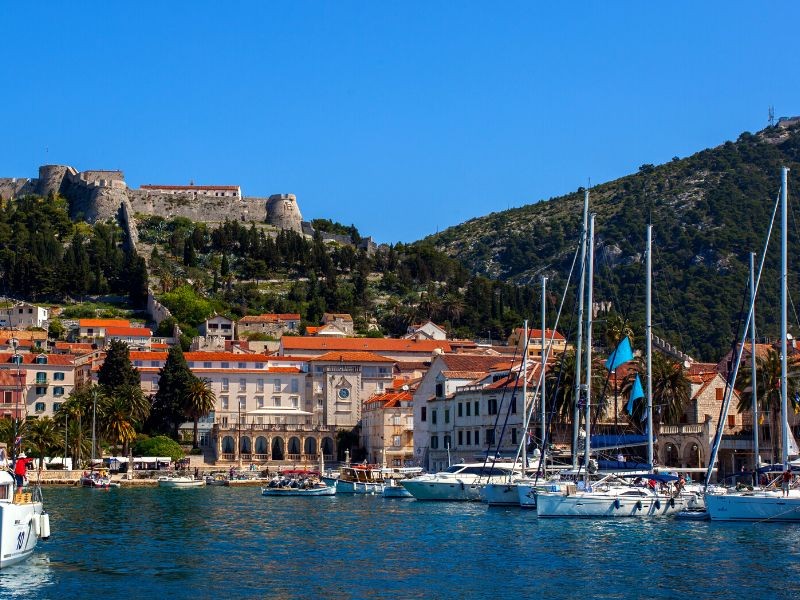
Did you know that Hvar is the only island in the world with six UNESCO heritage protections? Or that Hvar is the birthplace of organized tourism in Europe, dating back to 1868? Or that the first public theater in Europe was born in its best-known town in 1612? Or that it is Croatia’s sunniest island, bringing in 2760 hours or around 115 sunshine days per year? Hvar is undoubtedly the Adriatic’s most popular summer hotspot. This island knows no bounds and has something for all types of travelers, no matter their generation.
What to do in Hvar?
- Walk around and discover the center of the city - St.Stephen Cathedral & Square, Arsenal, Venetian Loggia and Clock Tower.
- Zipp around with a scooter and discover inland of the island,
- Hike up to the fortress Fortica and enjoy beautiful views.
- Dine in authentic surroundings.
- Taste some of the best Croatian wines, for which this island is famous.
For guided tours we recommend:
- Hvar Wine Tasting Tour - don’t miss a chance to try Plavac Mali, which is the most indigenous grape in Dalmatian Region.
- Lavender Tour - includes an expert guide to take you through the aromatic fields, where you will learn the harsh realities of life in Dalmatia before tourism.
- Cycling Tour - combines pleasure and workout to explore the island.
DAY 7. HVAR - TROGIR
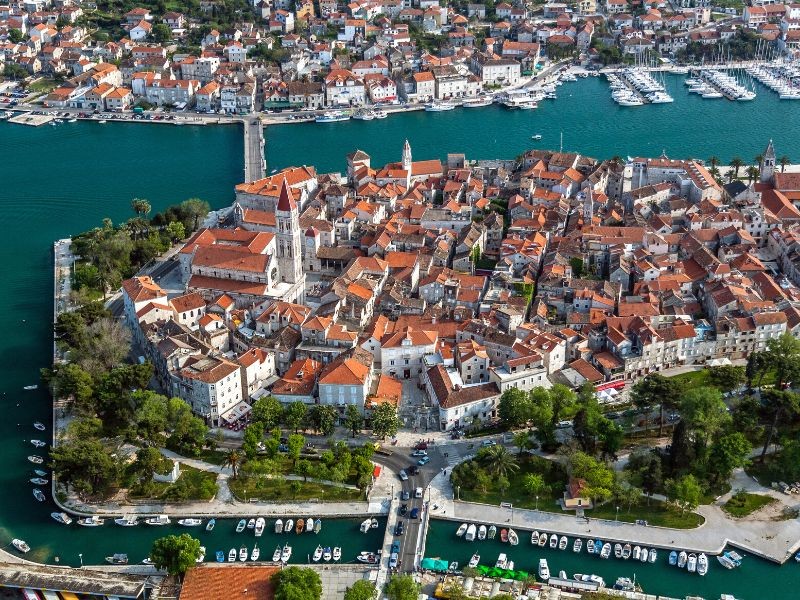
A Renaissance, Baroque, Romanesque and Gothic dream that sits on Croatia’s coast, with UNESCO charm and Mediterranean calm. Trogir is a real museum town that abounds in history, artistic masters, and magnificent stone buildings that have survived its turbulent past. Protected by UNESCO in 1997 as Central Europe’s best-preserved Romanesque-Gothic town, Trogir’s cultural and nautical heritage mix to form one of Dalmatia’s most frequented destinations today.
When in Trogir, we recommend:
- Exploring the historic center of the city (St. Lawrence Cathedral, Chapel and Baptistry of St John, City Loggia, Ćipiko palace).
- Coffee and people-watching on the promenade, Trogir’s waterfront promenade, locally known as the Riva, is arguably the best activity.
- See a concert at Kamerlengo, from opera to rock’n’roll, this 15th-century fortress is more than a historical attraction. Kamerlengo sits at the end of the Riva and welcomes tourists to its top to find spectacular views of the waterfront and old town.
- Shop the markets, from the freshest fish and vegetables picked that morning to cured meats and cheeses, homemade olive oil, and honey, there is nothing you can’t find at Trogir’s markets.
DAY 8. TROGIR - SPLIT
Leaving Trogir and sailing towards the city of Split for disembarkation.
Now, all that’s left to do is book a yacht, relax and enjoy. Contact Otium Yachts today and let’s talk about creating YOUR perfect sailing holiday.
